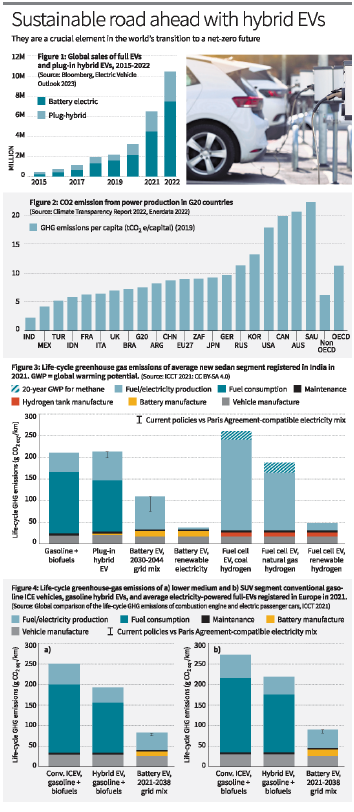Free Courses Sale ends Soon, Get It Now


Free Courses Sale ends Soon, Get It Now



Disclaimer: Copyright infringement not intended.
Context
Details
Introduction
Types of EVs
Fuel Economy and Emissions
.jpg)
Challenges in Transitioning to Electric Mobility
Role of Hybrid EVs in Decarbonization
Conclusion
Hybrid EVs provide an important transition strategy for economically developing countries. They offer fuel economy and emissions benefits while addressing the challenges of limited grid access and high vehicle costs. Full EVs remain the ultimate goal, but in the short term, hybrid EVs present a practical and sustainable solution towards net-zero emissions in the transport sector.
MUST READ ARTICLES:
https://www.iasgyan.in/blogs/electric-vehicles-22
https://www.iasgyan.in/daily-current-affairs/electric-vehicles-28
|
PRACTICE QUESTION Q. Discuss the significance of Hybrid Electric Vehicles (EVs) as a transitional solution in the context of sustainable transportation for economically developing countries. How do they address the challenges associated with full EV adoption, and what are the benefits they offer in terms of fuel economy and emissions reduction? (250 Words) |
https://epaper.thehindu.com/ccidist-ws/th/th_delhi/issues/45929/OPS/GU2BIAP91.1+G09BIC6TP.1.html
© 2024 iasgyan. All right reserved